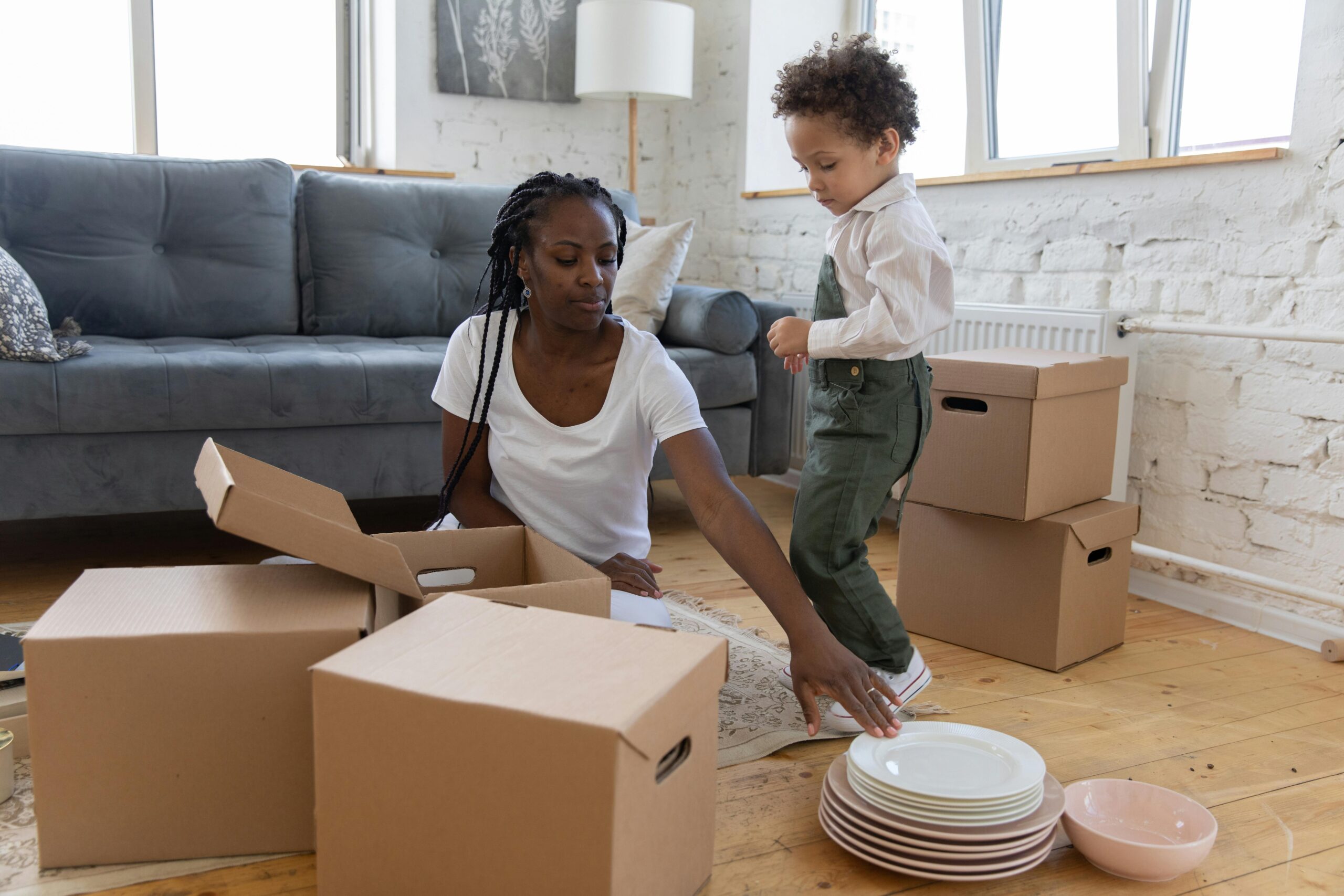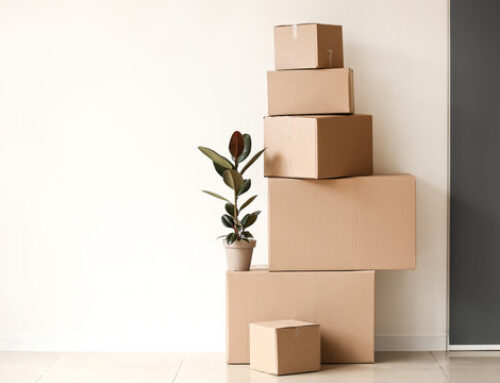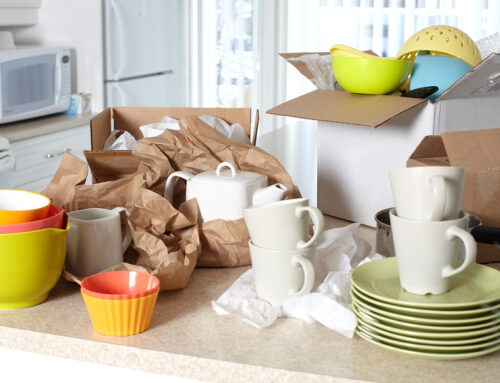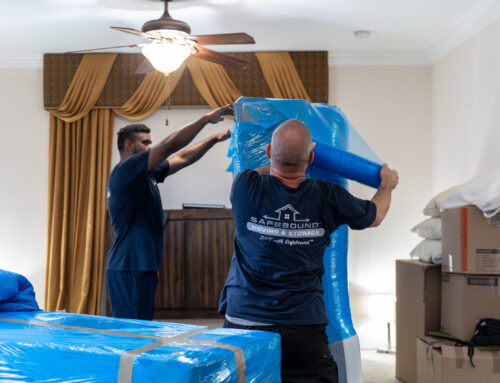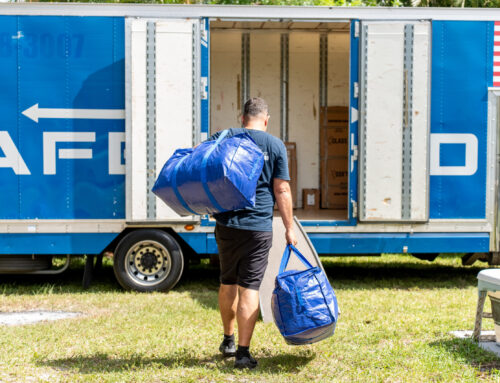Packing Hacks for Every Room: How to Ensure Your Belongings Arrive Safely
Moving can be an exciting adventure, but the packing process often feels like a daunting chore. Visions of crushed picture frames and shattered lamps dance in your head, turning the joy of a new beginning into a packing panic. Fear not, intrepid mover! With a little planning and some clever packing hacks, you can ensure your belongings arrive at your new destination safe and sound. This guide will equip you with room-specific strategies to conquer your packing woes and make unpacking a breeze.
- Living Room
- Kitchen
- Bedroom
- Bathroom
- Packing Products
- Labeling
- Timeline
- Essentials Box
- Declutter
- Bonus Tips
Living Room Packing Prowess
The living room is the heart of your home, and its contents often hold sentimental value. Here’s how to pack it with peace of mind:
- Furniture Fortress: Dismantle what you can. Legs of tables and chairs can be detached and secured with tape or zip ties. Wrap furniture in furniture pads or blankets – bubble wrap is great for protecting delicate surfaces like glass tabletops.
- Fortress the Fragile: Electronics like TVs and lamps need extra TLC. Use the original packaging if you have it. If not, pack them in sturdy boxes filled with packing peanuts or crumpled packing paper.
- Art Attack: Large art pieces need flat, secure boxes. Layer bubble wrap generously on both sides of the artwork and secure it with tape. Smaller framed pieces can be stacked vertically in a box with plenty of cushioning between each piece.
Kitchen Conquering
The kitchen is full of potential packing pitfalls. Here’s how to ensure your pots and pans arrive ready to cook:
- Dish Duty: Wrap each dish individually with bubble wrap or packing paper. Pack heavier dishes on the bottom and lighter items on top. Fill any empty spaces in the box with crumpled paper to prevent shifting.
- Potluck Packing: Pots and pans can be nested together to save space. Fill them with packing peanuts or soft kitchen towels to prevent scratches. Pack sharp knives separately and securely, wrapped in bubble wrap and placed upright in a box.
- Liquid Logic: For safety reasons, it’s best to avoid packing open containers of liquids. Use up or dispose of what you can before your move. For a few essential leftover condiments, secure the lids with tape and double-bag them inside a sealed plastic container.
Bedroom Bliss
Your bedroom is your sanctuary, so pack it with care to ensure a smooth transition.
- Mattress Magic: Most moving companies won’t pack your mattress, so plan to do it yourself. Invest in a mattress bag to protect it from dust and dirt during the move.
- Linen Love: Sheets, blankets, and pillows are great for filling empty spaces in boxes. Fold them neatly and pack them in sturdy boxes. Hang delicates like dress shirts and evening gowns in garment bags to prevent wrinkles.
- Jewelry Journey: Pack jewelry in its original boxes if possible. If not, use small plastic bags or fabric pouches to prevent tangles and scratches. Place them all in a secure, labeled box.
Bathroom Blitz
The bathroom may be compact, but it holds essential items. Pack it strategically to avoid leaks and broken bottles.
- Towel Tetris: Towels are another space-saving packing material. Fold them neatly and use them to cushion breakables.
- Bottle Bonanza: Empty all containers of liquids before packing. Wrap any remaining toiletries (shampoo, body wash) in plastic wrap to prevent leaks. Secure lids with tape and pack them upright in a sturdy box.
- Mirror, Mirror: Large mirrors are tricky to pack. If possible, leave them to the professionals. For smaller mirrors, use sturdy boxes with plenty of padding and secure them with packing tape.
Packing Powerhouse Products
Beyond room-specific strategies, some handy products can make your packing life easier:
- Vacuum Seal Bags: These space-saving wonders are perfect for bulky items like pillows, comforters, and off-season clothes.
- Packing Cubes: Color-coded cubes help you organize your belongings by room and make unpacking a breeze.
- Heavy-Duty Boxes: Don’t skimp on boxes! Invest in sturdy cardboard boxes specifically designed for moving. Avoid using flimsy boxes that can easily tear or collapse.
Labeling Like a Legend
Clear labeling is crucial! Use permanent markers and create a system that allows you to easily identify the contents of each box. Include the room the box belongs to and a brief description of the contents (e.g., “Living Room – Lamps”). You can even take it a step further and number your boxes to create a master list of their contents.
Packing with a Plan
Packing doesn’t have to be a last-minute frenzy. Start early and pack one room at a time. Create a packing schedule that allocates specific days for each room. This prevents overwhelm and ensures you have ample time to declutter as you pack. Here’s a sample schedule to get you started:
- Week 1: Purge and pack non-essentials in rooms you use less frequently (guest room, basement, attic). This frees up space for packing essentials later.
- Week 2: Tackle the kitchen and bathroom. Consolidate pantry items, dispose of expired products, and pack away seasonal appliances.
- Week 3: Focus on the living room. Dismantle furniture, pack electronics securely, and wrap artwork with care.
- Week 4: Pack the bedrooms. Declutter closets and drawers, pack linens and clothes, and don’t forget to label those boxes!
The Essentials Box
Pack a separate box with essentials you’ll need on moving day and the first few nights in your new home. This box should include:
- A change of clothes for each family member
- Toiletries and medications
- Phone chargers and portable chargers
- Paper towels, trash bags, and basic cleaning supplies
- Snacks and drinks
- Important documents like passports, birth certificates, and insurance paperwork
Declutter While You Pack
Moving is a fantastic opportunity to declutter! As you pack each room, ask yourself if you truly use and love the item. Here are some options for unwanted items:
- Sell: Online marketplaces or consignment shops are great ways to give your unwanted items a second life and earn some extra cash.
- Donate: Donate gently used items to charities or shelters that can give them a new home.
- Recycle or Dispose: Safely dispose of hazardous materials or recycle what you can.
Packing with Peace of Mind
With a little planning, organization, and these handy packing hacks, you can approach your move with confidence. Remember, a successful move starts with a well-packed box. So grab your packing tape, label maker, and a positive attitude, and get ready to embark on your next exciting adventure!
Bonus Packing Tips
Special Considerations: Packing for Unique Items
Every home has its unique treasures. Here are some tips for packing those special belongings:
- Books & Artwork: Pack books flat in sturdy boxes to prevent warping. Layer them with packing paper and fill any empty spaces. Use the same strategy for smaller framed artwork.
- Electronics: Original packaging is always best for electronics. If not available, use sturdy boxes with plenty of cushioning. Pack cables and accessories in separate labeled bags.
- Appliances: Unplug appliances and clean them thoroughly before packing. Secure lids and moving parts with tape. Use the original packaging for small appliances or invest in appliance boxes.
- Family Heirlooms & Antiques: These precious items deserve extra care. Consider hiring professional packers for high-value or fragile heirlooms. If packing yourself, use wooden crates for added protection and insure these items for your peace of mind.
- Plants: Moving day can be stressful for plants. Water them sparingly beforehand and wrap the pots in plastic bags to retain moisture. Transport them upright in a box with plenty of padding.
Packing Hacks for the Eco-Conscious Mover
Moving doesn’t have to be a waste-generating exercise. Here are some eco-friendly packing tips:
- Repurpose & Reuse: Use old blankets, towels, and clothes as packing material instead of bubble wrap. Cardboard boxes from deliveries can be repurposed for packing.
- Biodegradable Packing Peanuts: Instead of traditional packing peanuts, consider using biodegradable options made from corn starch or recycled paper. These dissolve in water and are kinder to the environment.
- Reusable Totes & Bins: Invest in reusable plastic bins or tote bags for packing clothes, linens, or toys. These can be used for storage in your new home and future endeavors.
- Sell or Donate Packing Supplies: After your move, don’t throw away leftover packing materials. Sell them online, donate them to a friend who’s also moving, or recycle them if possible.
Unpacking for Success
The last leg of your move is unpacking! Here are some tips to ensure a smooth transition:
- Room by Room: Unpack one room at a time, starting with the essentials like the kitchen and bathroom. This will help you feel settled faster.
- Labeling Pays Off: Those meticulously labeled boxes will be your savior during unpacking. Place them in the designated rooms and unpack one box at a time.
- The Power of the Purge: Moving can disrupt your existing organization system. Use unpacking as an opportunity to re-evaluate your belongings and declutter further. Donate or sell items that no longer spark joy.
- Assemble & Organize: Once unpacked, prioritize assembling furniture and organizing belongings. This will create a sense of normalcy and make your new space feel more like home.
Moving with Pets
Moving can be stressful for furry (or feathery) family members too. Here are some tips for a smooth pet-friendly move:
- Familiar Comfort: Pack a separate bag with your pet’s favorite toys, bedding, and food bowls. Having familiar items will help them adjust to the new environment.
- Leashed & Leashed Again: Ensure your pet’s leash, collar, and ID tags are readily accessible on moving day. If using a pet carrier, let your pet get comfortable with it beforehand.
- Update Microchip Info: Moving is a good time to double-check that your pet’s microchip information is up-to-date with your new address.
- Schedule a Vet Visit: Schedule a checkup with a local veterinarian in your new area to establish care for your pet.
By following these packing hacks and tips, you can ensure a smooth and stress-free move for yourself, your belongings, and even your furry friends. Now go forth and conquer your move with confidence and a well-packed box!

